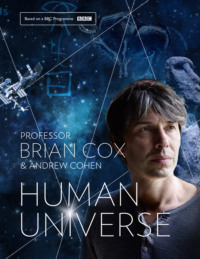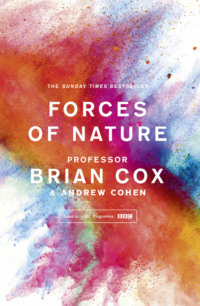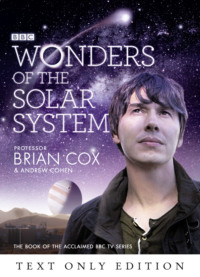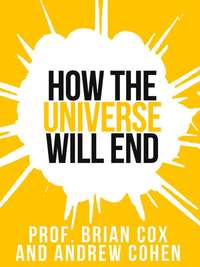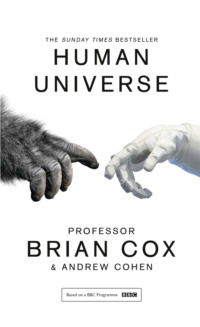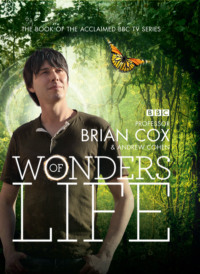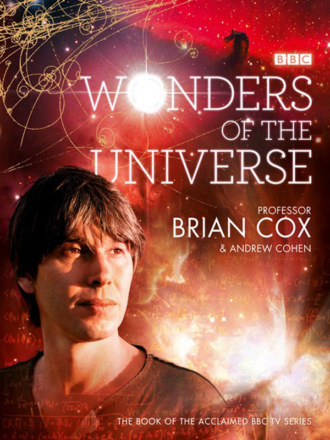
Полная версия
Wonders of the Universe

For Mum, Dad and Sandra – none of this would have been possible without you
Brian Cox
For my dad, Geof Cohen (1943–2007)
Andrew Cohen
Wonders of the Universe
Professor Brian Cox & Andrew Cohen

Copyright
HarperCollins Publishers
1 London Bridge Street
London SE1 9GF
www.harpercollins.co.uk
The BBC logo is a trademark of the British Broadcasting Corporation and is under licence.
BBC logo © BBC 1996
The authors assert their moral right to be identified as the authors of this work.
WONDERS OF THE UNIVERSE. Text © Brian Cox and Andrew Cohen 2011. All rights reserved under International and Pan-American Copyright Conventions. By payment of the required fees, you have been granted the non-exclusive, non-transferable right to access and read the text of this e-book on-screen. No part of this text may be reproduced, transmitted, down-loaded, decompiled, reverse engineered, or stored in or introduced into any information storage and retrieval system, in any form or by any means, whether electronic or mechanical, now known or hereinafter invented, without the express written permission of HarperCollins e-books.
A catalogue record for this book is available from the British Library.
Ebook Edition © MARCH 2011 ISBN: 9780007413379
Version 2017-02-03
Contents
Copyright
Introduction
The Universe
Chapter 1
Messengers
The Story of Light
Our place in the Universe
Our galactic neighbourhood
Mapping the Milky Way Galaxy
The shape of our galaxy
A star is born
What is Light?
Young’s double-slit experiment
Messengers from across the ocean of space
Chasing the speed of light
The search for a cosmic clock
Speed limits
Time Travel
To the dawn of time
Finding Andromeda
The Hubble Telescope
Hubble’s most important image
All the colours of the rainbow
Hubble expansion
Redshift
The Birth of the Universe
Visible light
Picturing the past
First sight
Chapter 2
Stardust
The Origins of Being
The cycle of life
Mapping the night sky
Stellar nurseries
How to find exoplanets
The orgins of life
The Periodic Table
The universal chemistry set
What are stars made of?
The Early Universe
El Tatio Geysers, Chile
The Big Bang
Sub-atomic particles
Timeline of the Universe: The Big Bang to the present
Matter by numbers
The most powerful explosion on Earth
From Big Bang to Sunshine: The First Stars
Red giant
Star death
Planetary nebulae
The rarest of all
Supernova: life cycle of a star
The beginning and the end
The orgin of life
Chapter 3
Falling
Full Force
The invisible string
The apple that never fell
The grand sculpture
The geoid
The Tug of the Moon
The false dawn
The Blue Marble
Galactic cannibals
Collision course
When galaxies collide
Feeling the Force
The gravity paradox
The land of little green men
What is gravity?
Einstein’s Theory of General Relativity
Into the darkness
The anatomy of a black hole
Chapter 4
Destiny
The Passage of Time
The cosmic clock
The galactic clock
Ancient life
The arrow of time
The order of disorder
Entropy in action
The life cycle of the Universe
The life of the Universe
The Destiny of Stars
The demise of our universe
The death of the Sun
The last stars
The beginning of the end
A very precious time
Searchable Terms
Picture credits
Acknowledgements
About the Author
Credits
About the Publisher

INTRODUCTION
THE UNIVERSE
At 13.7 billion years old, 45 billion light years across and filled with 100 billion galaxies – each containing hundreds of billions of stars – the Universe as revealed by modern science is humbling in scale and dazzling in beauty. But, paradoxically, as our knowledge of the Universe has expanded, so the division between us and the cosmos has melted away. The Universe may turn out to be infinite in extent and full of alien worlds beyond imagination, but current scientific thinking suggests that we need it all in order to exist. Without the stars, there would be no ingredients to build us; without the Universe’s great age, there would be no time for the stars to perform their alchemy. The Universe cannot be old without being vast; there may be no waste or redundancy in this potentially infinite arena if there are to be observers present to gaze upon its wonders.
The story of the Universe is therefore our story; tracing our origins back beyond the dawn of man, beyond the origin of life on Earth, and even beyond the formation of Earth itself; back to events – perhaps inevitable, perhaps chance ones – that occurred less than a billionth of a second after the Universe began.
AN ANCIENT WONDER
On Christmas Eve 1968, Apollo 8 passed into the darkness behind the Moon, and Frank Borman, Jim Lovell and William Anders became the first humans in history to lose sight of Earth. When they emerged from the Lunar shadow, they saw a crescent Earth rising against the blackness of space and chose to broadcast a creation story to the people of their home planet. A quarter of a million miles from home, lunar module pilot William Anders began:
‘We are now approaching lunar sunrise and, for all the people back on Earth, the crew of Apollo 8 has a message that we would like to send to you.
In the beginning God created the heaven and the Earth.
And the Earth was without form, and void; and darkness was upon the face of the deep. And the Spirit of God moved upon the face of the waters.
And God said, Let there be light: and there was light.
And God saw the light, that it was good: and God divided the light from the darkness.’
The emergence of light from darkness is central to the creation mythologies of many cultures. The Universe begins as a void; the Maori called it Te Kore, the Greeks Chaos. The Egyptians saw the time before creation as an infinite, fathomless ocean out of which the land and the gods emerged. In some cultures, God is eternal: He created the Universe out of nothing and will outlast it. In others, such as some Hindu traditions, a vast primordial ocean predates the heavens and Earth. Lord Vishnu floated, asleep, on the ocean, entwined in the coils of a giant cobra, and only when light appeared and the darkness was banished did he awake and command the creation of the world.
We still don’t know how the Universe began, but we do have very strong evidence that something interesting happened 13.75 billion years ago that can be interpreted as the beginning of our universe. We call it the Big Bang. (We must be careful with our choice of words here, because this is a book about science, and the key to good science is the separation of the known from the unknown.) This interesting thing that happened corresponds to the origin of everything we can now see in the skies. All the ingredients required to build the hundreds of billions of galaxies and thousands of trillions of suns were once contained in a volume far smaller than a single atom. Unimaginably dense and hot beyond comprehension, this tiny seed has been expanding and cooling for the last 13.75 billion years, which has been sufficient time for the laws of nature to assemble all the complexity and beauty we observe in the night skies. These natural processes have also given rise to Earth, life, and also consciousness, which in many ways is harder to comprehend than the mere emergence of the seemingly infinite stars.
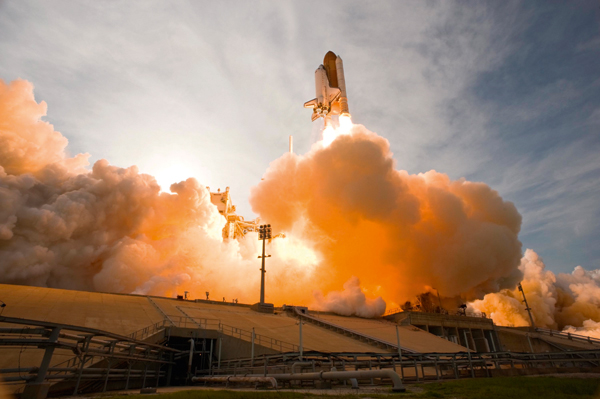
The work of the space programmes across the world cannot be viewed as a luxury, but rather as a necessity. It is through the missions of space shuttles such as Atlantis
The cosmos is about the smallest hole that a man can hide his head in.
—G.K. Chesterton
Care is in order, because the very beginning – by which we mean the events that happened during the Planck epoch – the time period before a million million million million million million millionths of a second after the Big Bang, is currently beyond our understanding. This is because we lack a theory of space and time before this point, and consequently have very little to say about it. Such a theory, known as quantum gravity, is the holy grail of modern theoretical physics and is being energetically searched for by hundreds of scientists across the world. (Albert Einstein spent the last decades of his life searching in vain for it.) Conventional thinking holds that both time and space began at time zero, the beginning of the Planck era. The Big Bang can therefore be regarded as the beginning of time itself, and as such it was the beginning of the Universe.
There are alternatives, however. In one theory, what we see as the Big Bang and the beginning of the Universe was caused by the collision of two pieces of space and time, known as ‘branes’, that had been floating forever in an infinite, pre-existing space. What we have labelled the beginning was therefore nothing more significant than a cosmic collision of two sheets of space and time.
It may be that the question ‘Why is there a Universe?’ will remain forever beyond us; it may also be that we will have an answer within our lifetimes, but the quest has to date proved more valuable than the answer because the ancient search for origins lies at the very heart of science. Indeed, it lies at the heart of much of human cultural development. The desire to understand events beyond the terrestrial seems to be innate, because all the great civilisations of antiquity have shared it, developing stories of beginnings, origins and endings. It is only recently that we have discovered that this quest is also profoundly useful in a practical sense. When coupled with the scientific method, this quest has allowed us not only to better understand nature, but to manipulate and control it for the enrichment of our lives through technology. The well-spring of all that we take for granted, from medical science to intercontinental air travel, is our curiosity.
THE VALUE OF WONDER
The idea that a journey to the edge of the Universe is deeply relevant to our everyday lives lies at the heart of Wonders of the Universe. I cannot emphasize enough my strong conviction that exploration, both intellectual and physical, is the foundation of civilisation. So whilst building rockets to the Moon and telescopes to capture the light from the most distant stars may seem like an interesting luxury, such a view would be superficial, incorrect and downright daft – to borrow a phrase from my native Oldham. We are part of the Universe; its fate is our fate; we live in it and it lives in us. How can anything be more important, relevant and useful than understanding its workings?
When we began to think about the series, we wanted to make programmes that were more than a simple tour of the wonders of the Universe. Of course black holes, colliding galaxies and stars at the edge of time are fascinating, and we see them all, but to characterise the ancient science of astronomy as a spectator sport would be to miss the point. The wonders we see through our telescopes are laboratories where we can test our understanding of the natural world in conditions so extreme that we will never be able to recreate them here on Earth. With this in mind, we decided to base the programmes around scientific themes rather than the wonders themselves.
When you set sail for Ithaca, wish for the road to be long, full of adventures, full of knowledge.
—C. P. Cavafy
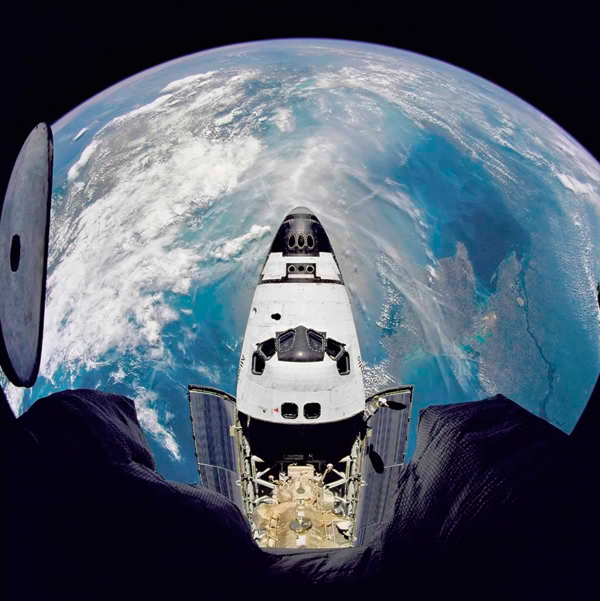
Endeavour that we can truly begin to understand the origins and the workings of the Universe and use this information to plan for our future on Earth.
‘Messengers’ is about light – our only connection with the distant Universe that may lie forever beyond our reach. But it is also about the information stored within light itself, and how that information got there; the fingerprints of the chemical elements are to be found in the most distant starlight, enabling us to know with certainty the composition of the most distant star.
‘Stardust’ asks an ancient question: what are the building blocks of the Universe? And also, how was the raw material of a human being assembled from the debris of the Big Bang? – a searingly hot, yet beautifully ordered fireball with no discernable structure.
‘Falling’ tells the story of the great sculptor of the Universe: gravity. For some reason that we do not understand, gravity is by far the weakest of the four fundamental forces in the Universe, but because it has an infinite range and acts between everything that exists, its influence is all-pervasive. Our most precise theory of gravity, Einstein’s General Theory of Relativity, dates from 1915, which makes it the oldest of the modern theories of the forces. The theory of the electromagnetic force, Quantum Electrodynamics, dates from the 1950s, while the theory of the Strong Nuclear Force from the 1960s and 70s. Our description of last of the four, the Weak Nuclear Force, resides in the Standard Model of particle physics. This theory, a product of the 1970s, unifies the description of the Weak Nuclear Force with Quantum Electrodynamics, although there is a missing piece of the theory known as the Higgs Boson that is currently being searched for at the Large Hadron Collider at CERN in Geneva. Until the Higgs Boson, or whatever does its job, is found, we cannot claim to have a working description of the Weak Nuclear Force and its relationship with electromagnetism.
However despite the long pedigree and beautiful accuracy and elegance of Einstein’s theory of gravity, it is known to be incomplete. Our description of the Universe breaks down in the heart of its most evocatively named wonders. Black holes are known to exist at the centre of galaxies such as the Milky Way, and are dotted throughout the cosmos; the carcasses of the most massive stars in the Universe. We see them by their influence on passing stars and by detecting the intense radiation emitted by gas and dust that has the misfortune to venture too close to their event horizons. We have even seen their formation in the most violent cosmic events – supernova explosions. These events mark the destruction of stars that once burned brightly for millennia, completed in a matter of minutes.
The final chapter, ‘Destiny’, delves into the distant past and the far future; following the inevitable ticking of the universal clock. It is also the chapter that most directly touches on the great contribution of engineering to our story. The science of thermodynamics, which has become our guide to the ultimate fate of the Universe, arose from considerations of the efficiency of steam engines in the nineteenth century and not a desire to peer out towards a possibly infinite future. In ‘Destiny’ we describe thermodynamics in detail, and show how this quintessentially nineteenth-century science allows us to speculate with some grounding in reality about events that will happen 10,000,000,000,000,000,000,000,000,000,000,000,
000,000,000,000,000,000,000,000,000,000,000,000,000,000,
000,000,000,000,000,000,000,000 years from now. Not bad for the pioneers of the age of steam.
So as we look to the future and survey the wonders of our universe, we discover that Einstein’s theory of gravity, our best description of the fabric of the Universe, predicts its demise inside black holes. The collapsing remnants of the most luminous stars represent the edge of our understanding of the laws of physics and therefore the edge of our understanding of the wonders of the Universe. This is exactly where every scientist wants to be. Science is a word that has many meanings; one might say science is the sum total of our knowledge of the Universe, the great library of the known, but the practice of science happens at the border between the known and the unknown. Standing on the shoulders of giants, we peer into the darkness with eyes opened not in fear but in wonder. The fervent hope of every scientist is that they glimpse something that not only requires a new scientific theory, but that requires the old theory to be replaced. Our great library is constantly being rewritten; there are no sacred tomes; there are no untouchable truths; there is no certainty; there is simply the best description we have of the Universe, based purely on our observations of its wonders.
The scientific project is ultimately modest: it doesn’t seek universal truths and it doesn’t seek absolutes, it simply seeks to understand – and therein lies its power and value. Science has given us the modern world, of that there can be no doubt. It has improved our lives beyond measure; increased life expectancy, decreased child mortality, eradicated many diseases and rendered many more impotent. It has given many of us the gift of time, freed us from the drudgery of mere survival and allowed us to open our minds and explore. Science is therefore a virtuous circle; its discoveries creating more time and wealth that we can, if we are wise, invest in further voyages of exploration and discovery. But for all its undoubted usefulness, I maintain that science is fuelled not by utilitarian desire but by curiosity. The exploration of the Universe and its wonders is as important as the search for new medical treatments, new energy sources or new technologies, because ultimately all these valuable advances rest on an understanding of the basic laws that govern everything in nature, from atoms to black holes and everything in between. This is why curiosity-driven science is the most valuable of pursuits, and this is why we must continue our journey into the darkness

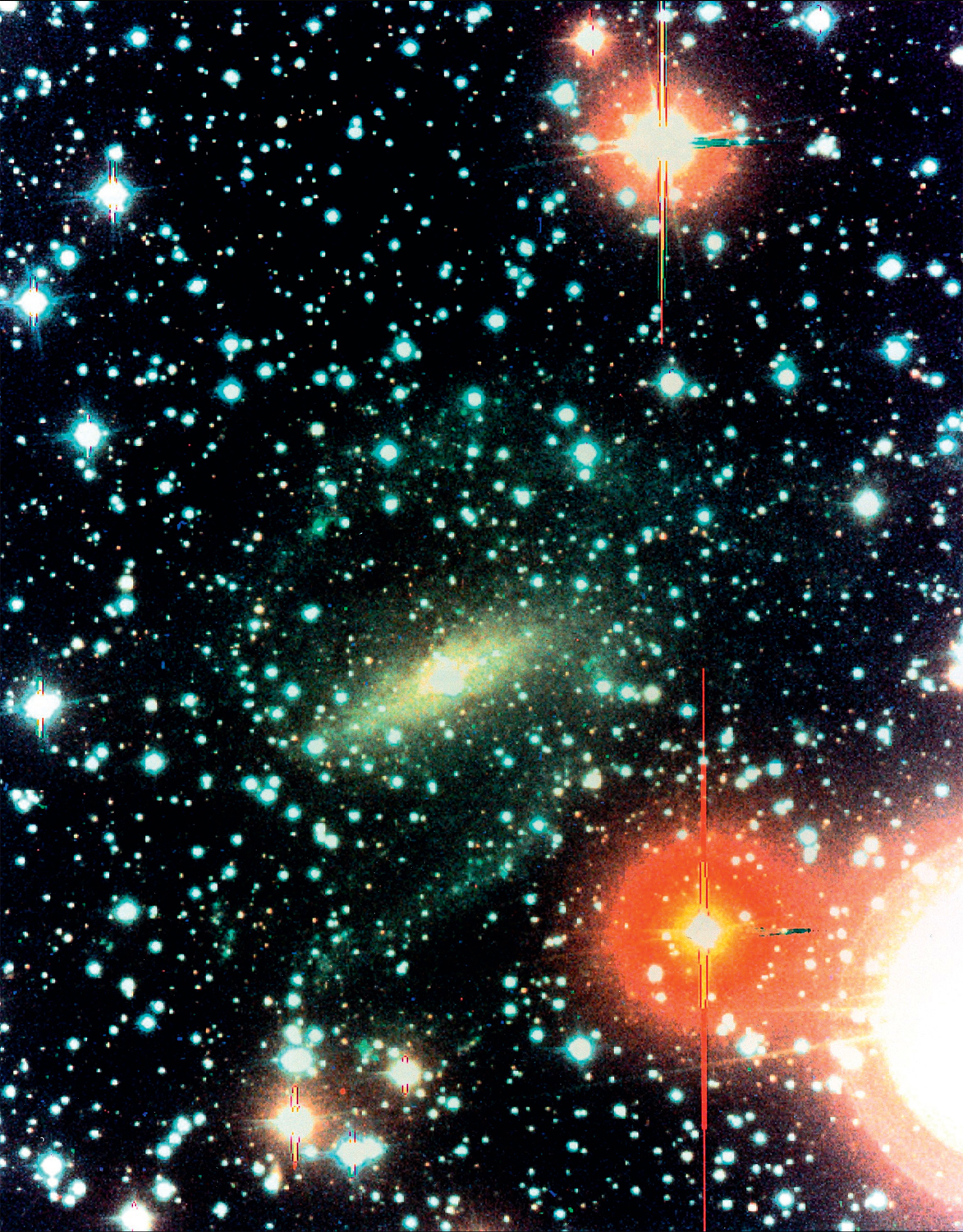
Armed with a greater knowledge and understanding of our universe, and also with new technology and modern approaches to science, we can discover wonders of the Universe that would have remained hidden to us centuries ago. Galaxies such as the spiral-shaped Dwingeloo 1 have recently been found hidden behind the Milky Way. This discovery supports what we already know: that there are many more wonders out there in the Universe that we have yet to discover.
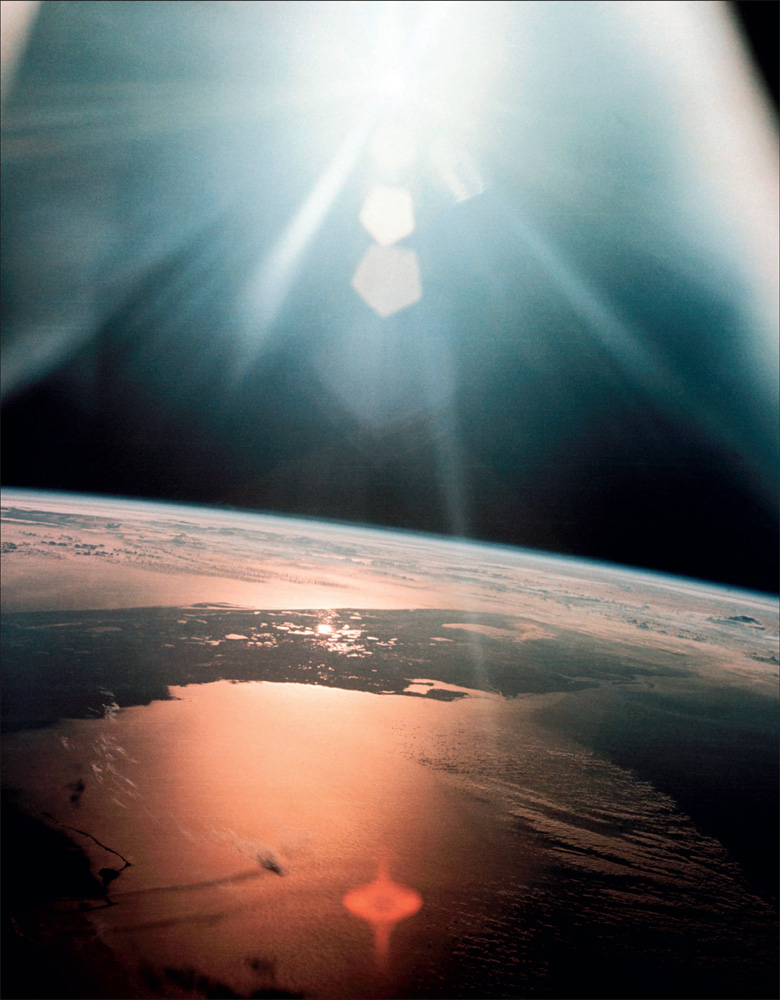
Конец ознакомительного фрагмента.
Текст предоставлен ООО «ЛитРес».
Прочитайте эту книгу целиком, купив полную легальную версию на ЛитРес.
Безопасно оплатить книгу можно банковской картой Visa, MasterCard, Maestro, со счета мобильного телефона, с платежного терминала, в салоне МТС или Связной, через PayPal, WebMoney, Яндекс.Деньги, QIWI Кошелек, бонусными картами или другим удобным Вам способом.


